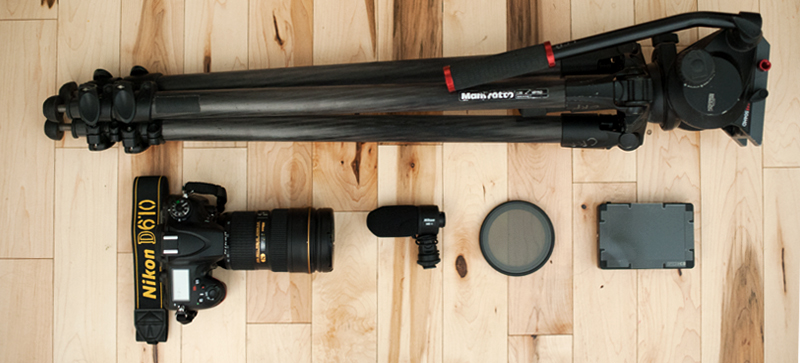Hey Corey,
I’ve been a photographer for years, most recently shooting with my Nikon D800. I think I’m finally ready to “hit that record button,” as you once put it, and I was wondering if you can give me a quick list of the basic equipment I need to get into video and start shooting with the D800 (soon to be the D810!).
Thanks for all that you do,
Carson
Hey, Carson! Congrats on deciding to make the jump from still to moving pictures. I did it years ago when the Nikon D90 first came out, and I haven’t ever looked back! Your background as a photographer will make your transition to filmmaker much easier, as many of the rules that apply to still photography also apply to creating interesting video content.
Since you already have a video-enabled HD-SLR camera and, I assume, a bevy of lenses, you’re almost ready to go. But beyond just going out and hitting that record button, there are four specific pieces of video equipment I can recommend that will give your first motion projects that professional touch.
Variable ND filter: One of the best ways to control the exposure in video is to use a variable neutral-density filter, which is a filter with two polarizing elements that change from light to dark as you spin the outer element. This filter will allow you to control your exposure and continue to use a shallow depth of field to achieve that cool, cinematic look.
Fluid-head tripod: Pan, sweep, tilt and move your camera fluidly to achieve those necessary establishing shots.
Shotgun Microphone: Your D800’s built-in microphone does a surprisingly good job of recording audio, but you can really take it to the next level with a shotgun mic. I recommend the Nikon ME-1. It’s small, easy and will noticeably improve the quality of your sound.
A Loupe or Monitor: This is one piece of equipment that few would think of, but I actually think that having a way to give yourself a larger field of view to see what you’re shooting is one of the best ways to take your filmmaking to the next level. A basic solution would be to use an optical loupe that snaps onto the back of your camera. (Zacuto makes a good one.) But even more valuable would be an actual monitor. A Small HD DP4 monitor is light, easy to view even in sunlight, and allows you to really make sure that your exposure and highlights are perfect, and that your focus is tack sharp.
This combination of equipment will help you take a deeper dive into video and tell your stories as creatively as possible. Best of luck with the transition!

4 comments
And don’t forget a memory card that’s up to speed for capturing the level of continuous data generated when shooting video!
Yes! Thanks for the reminder Nick! I always travel with my SanDisk ExtremePRO CF and SDHC memory cards. These cards are a MUST for any video kit.
Any thoughts on the Atomos Ninja Blade as a monitor / recorder? Seems pretty nice to be able to roll the D800 directly into ProRes (and uncompressed!).
I have a GoPro on a phantom 2 and use a Black Pearl monitor. Can that be used with my “on back order” D810?
Comments are closed.